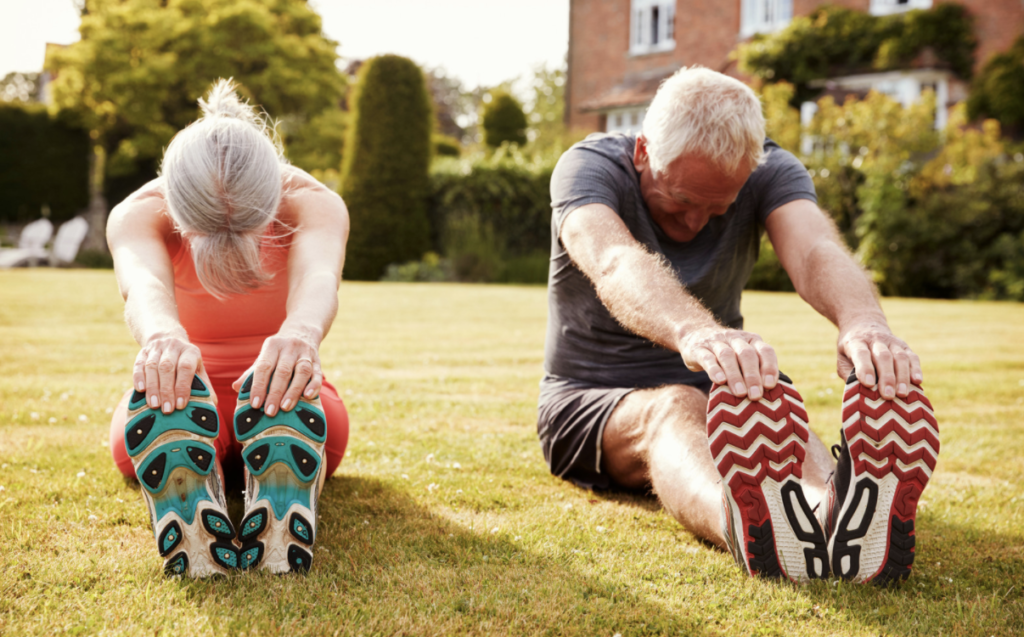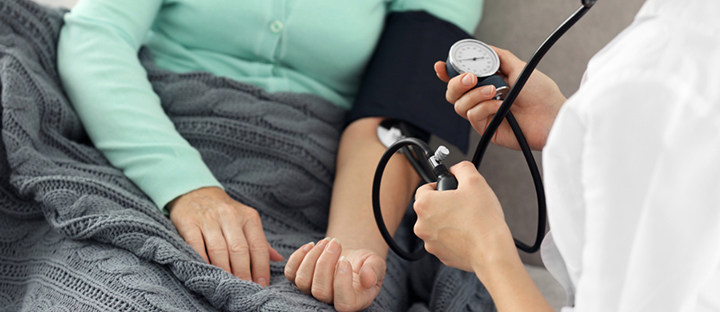High blood pressure, also called hypertension, is deceiving. Sometimes called the silent killer because most people don’t feel it since often there are no noticeable symptoms. Many folks don’t know they have high blood pressure until they visit their physician. There is good news. Lifestyle changes can help lower blood pressure and keep it under control.
What exactly is high blood pressure, and what are the perils?
Blood pressure is the force in which blood flows against the inner walls of your arteries. Throughout the day, it normally fluctuates—rising naturally in the morning and temporarily increasing when you’re under stress, excited, or exercising—falling when you’re relaxed or asleep. When your resting blood pressure level begins to rise too high, blood vessels can weaken and get scarred. This doubles your risk for a heart attack. Your odds for a stroke quadruple. You can experience heart failure, vision loss, kidney problems, dementia, and circulation problems. Bones can weaken. Men can have erectile dysfunction.
Who is at increased risk for high blood pressure?
If you smoke or are overweight, you are at high risk. If you eat a diet low on produce and fiber and high in fats and salt, you’re also at risk. Drinking too much alcohol, living with chronic stress, or lack of physical activity can cause hypertension. African Americans are at higher risk for hypertension. Aging also plays a critical role.
Why does my blood pressure fluctuate throughout the day?
Blood pressure fluctuates throughout the day naturally. It’s lowest when you are sleeping. It can also rise when you are nervous, active, or excited. For most waking hours, though, BP stays relatively stable and should be lower than 120/80 mmHg* for younger adults.
For seniors, numbers can vary depending upon the individual’s health. For adults 65 and older who have hypertension combined with other serious health issues, the American Heart Association (AHA) and American College of Cardiology(ACC) recommend personalized treatment plans based on advice from your physician.
*The abbreviation mm Hg means millimeters of mercury. Mercury was used in the first accurate pressure gauges and is still used in medicine today as the standard unit of measurement for pressure.
What are systolic and diastolic pressure, and how do they determine my reading?
Systolic blood pressure is the top number that measures the force your heart exerts on the walls of your arteries each time it beats. The bottom number is called diastolic blood pressure. It measures the force your heart exerts on the walls of your arteries in between beats. Your systolic and diastolic blood pressure is determined by measuring both. In general, lower numbers are better, but very low BP can also cause concern. Consistent readings in the elevated or “prehypertension” range increase the likelihood of hypertension developing unless preventative actions are taken.

How is high blood pressure treated if lifestyle changes are not enough?
If your blood pressure is mildly elevated, you have prehypertension, and lifestyle changes alone may be the first step to controlling it. Losing 5 to 10 percent of your body weight, reducing your sodium intake, improving your diet, and exercising can reduce your blood pressure. Your doctor should recommend these changes along with blood pressure medications if diet and exercise are not enough.
Today, six major types of blood pressure medication are used to control the disease.
- Diuretics (help the body eliminate extra water and sodium).
- Beta-blockers (lowers blood pressure by reducing your heart rate and output of blood).
- Vasodilators (medications used to open (dilate) blood vessels).
- Angiotensin-converting enzyme (ACE) inhibitors (helps relax the veins and arteries).
- Angiotensin II receptor blockers (ARBs) (used to treat high blood pressure and heart failure).
- Calcium-channel blockers (helps relax constricted blood vessels).
What are the benefits of medication in the treatment of high blood pressure?
Clinical studies have shown that treating high BP is most beneficial when it helps lower the systolic BP [the top number]. In geriatrics, the goal is to balance the potential benefits of the medicine with the risks.
In addition to increasing prescription drug costs and compounding the potential for medication mishaps, unnecessary BP medications can cause dangerous side effects. Orthostatic hypotension, or a temporary drop in BP upon standing, is one of the most dangerous side effects since it can cause dizziness and contribute to falls.
Your doctor should help you weigh the pros and cons of beginning or adjusting BP treatment and possibly suggest alternative measures to get your numbers under control.

Can a healthy lifestyle help prevent the damaging effects of high blood?
The following recommendations can help reduce the risk and lower your numbers if you already have prehypertension or hypertension.
- Lose weight. Excess weight with fat stored in your abdomen can raise blood pressure by increasing blood volume and changing the balance of pressure-regulating hormones.
- Cut back on alcohol. It is suggested if you are a man who has more than two drinks a day or a woman who has more than one drink a day, it may be time to cut back. While a bit of alcohol may relax arteries, too much seems to have the opposite effect.
- Move around more. According to the AHA, exercise and other kinds of physical activity help keep arteries flexible. You could lower your blood pressure by 8 to 10 points with regular exercise.
- Feed healthy blood pressure. Low-fat and fat-free dairy products, such as milk and yogurt, produce, and dried beans help regulate your body’s blood pressure. High amounts of sodium—found in many processed foods—make your body retain water (which boosts blood volume) and tighten small blood vessels. Saturated fat found in most fast foods also raise blood pressure.
- Quit smoking or vaping. Smoking damages arteries and raises the risk of heart disease, and the chemicals in tobacco products elevate blood pressure.
- Lower stress. You’ll feel better and find it easier to make other healthy changes if you regularly practice stress-soothing techniques such as breathing exercises, progressive relaxation, and fitness activities. One method, meditation, has been shown to reduce the risk for heart attacks and strokes in people with high blood pressure.


